You need to choose options for product.
Sale
-
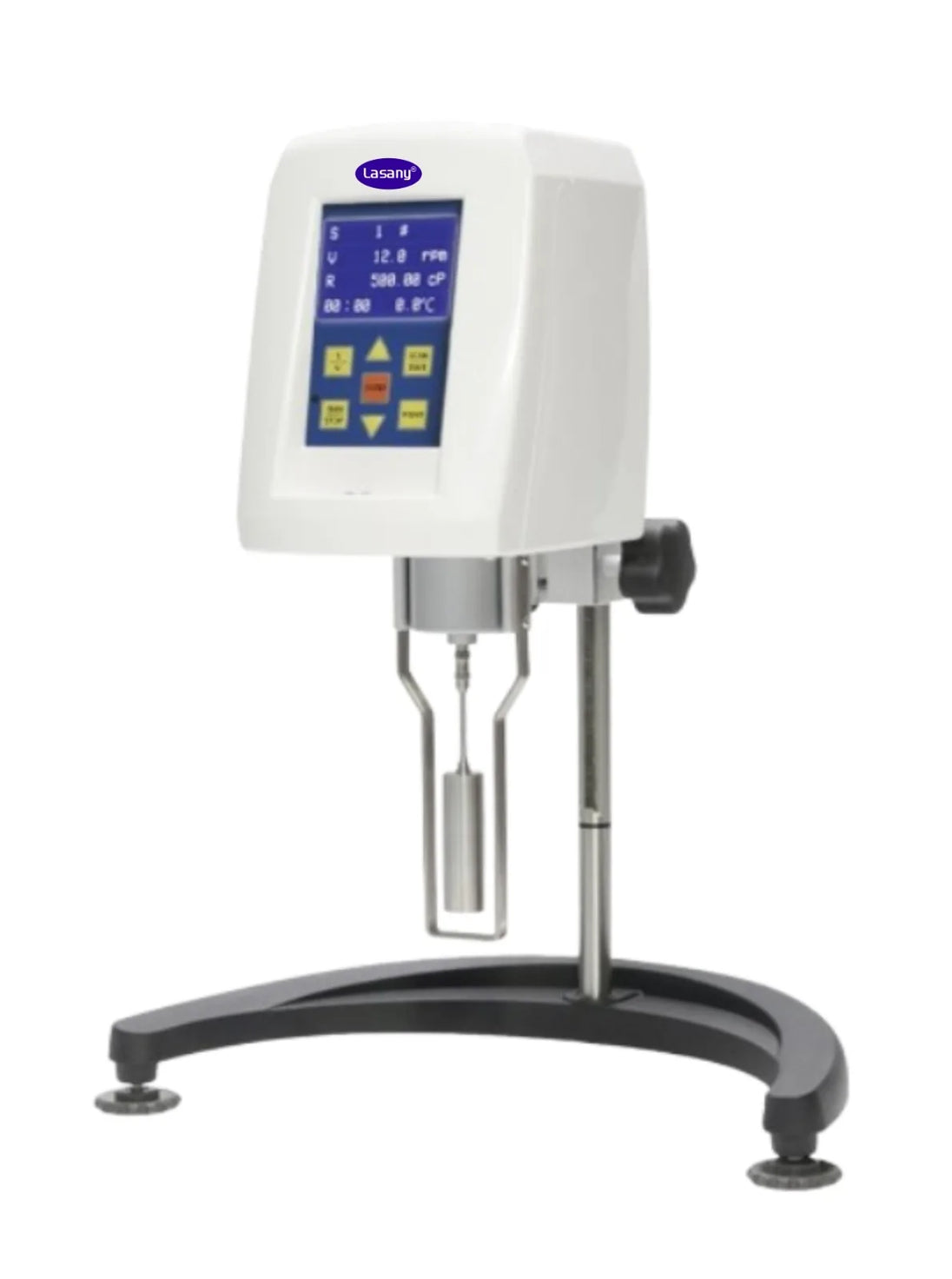 files/WhatsApp-Image-2024-12-10-at-3.30.56-PM.webp
files/WhatsApp-Image-2024-12-10-at-3.30.56-PM.webp
A digital viscometer is a device used to measure the viscosity of a fluid, which is a measure of the fluid’s resistance to flow. Viscosity is important in various industries, such as pharmaceuticals, food and beverages, cosmetics, and lubricants. Digital viscometers provide accurate and reliable measurements, often displaying results on a digital readout for easy interpretation.
Key Components and Features
Measuring System:
- Spindle: A rotating element that is immersed in the fluid. Different spindles are used for different viscosity ranges.
- Motor: Drives the spindle at a controlled speed.
Control System:
- Digital Display: Shows the viscosity reading in units such as centipoise (cP) or Pascal-seconds (Pa·s).
- Keypad/Touchscreen: Allows the user to set parameters, such as spindle speed and measurement time.
Sensors:
- Torque Sensor: Measures the resistance to spindle rotation caused by the fluid’s viscosity.
- Temperature Sensor: Monitors the fluid temperature, as viscosity is temperature-dependent.
Software:
- Data Logging: Stores measurement data for future analysis.
- Graphical Display: Provides visual representation of viscosity changes over time.
Working Principle
A digital viscometer operates by rotating a spindle in the fluid at a constant speed and measuring the torque required to maintain that speed. The resistance encountered by the spindle is proportional to the fluid’s viscosity. The device converts this resistance into a viscosity reading displayed on the digital screen.
Types of Digital Viscometers
Rotational Viscometers:
- Measure viscosity by rotating a spindle in the fluid.
- Common in laboratory settings for a wide range of fluid viscosities.
Falling Piston Viscometers:
- Measure viscosity by observing the time it takes for a piston to fall through the fluid under gravity.
- Suitable for highly viscous fluids.
Vibrational Viscometers:
- Measure viscosity by vibrating a sensor immersed in the fluid.
- Often used for continuous monitoring in industrial processes.
Applications
- Quality Control: Ensures consistency and quality of products such as paints, oils, and foods.
- Research and Development: Investigates the properties of new materials and formulations.
- Process Monitoring: Monitors viscosity in real-time during manufacturing processes.
Advantages of Digital Viscometers
- Accuracy: Provides precise viscosity measurements with high repeatability.
- Ease of Use: Digital interfaces are user-friendly and allow for quick setup and operation.
- Data Management: Ability to store, retrieve, and analyze measurement data electronically.
- Versatility: Can measure a wide range of viscosities and is adaptable to various applications.
Technical specification
Measuring Range(mPa.s) : 10-2,000,000
No. of Speed(rpm) : 0.3, 0.6, 1.5, 3, 6, 12, 30, 60
Spindles : #1,#2,#3,#4 is Standard Configuration
All Measurement Parameters
Auto Range Function.
LCD Display with Back Light.
Direct Viscosity reading and Temperature Display.
- Regular price
- Rs.150,000.00
- Sale price
- Rs.90,000.00
Sale
A digital viscometer is a device used to measure the viscosity of a fluid, which is a measure of the fluid’s resistance to flow. Viscosity is important in various industries, such as pharmaceuticals, food and beverages, cosmetics, and lubricants. Digital viscometers provide accurate and reliable measurements, often displaying results on a digital readout for easy interpretation.
Key Components and Features
Measuring System:
- Spindle: A rotating element that is immersed in the fluid. Different spindles are used for different viscosity ranges.
- Motor: Drives the spindle at a controlled speed.
Control System:
- Digital Display: Shows the viscosity reading in units such as centipoise (cP) or Pascal-seconds (Pa·s).
- Keypad/Touchscreen: Allows the user to set parameters, such as spindle speed and measurement time.
Sensors:
- Torque Sensor: Measures the resistance to spindle rotation caused by the fluid’s viscosity.
- Temperature Sensor: Monitors the fluid temperature, as viscosity is temperature-dependent.
Software:
- Data Logging: Stores measurement data for future analysis.
- Graphical Display: Provides visual representation of viscosity changes over time.
Working Principle
A digital viscometer operates by rotating a spindle in the fluid at a constant speed and measuring the torque required to maintain that speed. The resistance encountered by the spindle is proportional to the fluid’s viscosity. The device converts this resistance into a viscosity reading displayed on the digital screen.
Types of Digital Viscometers
Rotational Viscometers:
- Measure viscosity by rotating a spindle in the fluid.
- Common in laboratory settings for a wide range of fluid viscosities.
Falling Piston Viscometers:
- Measure viscosity by observing the time it takes for a piston to fall through the fluid under gravity.
- Suitable for highly viscous fluids.
Vibrational Viscometers:
- Measure viscosity by vibrating a sensor immersed in the fluid.
- Often used for continuous monitoring in industrial processes.
Applications
- Quality Control: Ensures consistency and quality of products such as paints, oils, and foods.
- Research and Development: Investigates the properties of new materials and formulations.
- Process Monitoring: Monitors viscosity in real-time during manufacturing processes.
Advantages of Digital Viscometers
- Accuracy: Provides precise viscosity measurements with high repeatability.
- Ease of Use: Digital interfaces are user-friendly and allow for quick setup and operation.
- Data Management: Ability to store, retrieve, and analyze measurement data electronically.
- Versatility: Can measure a wide range of viscosities and is adaptable to various applications.
Technical specification
Measuring Range(mPa.s) : 10-2,000,000
No. of Speed(rpm) : 0.3, 0.6, 1.5, 3, 6, 12, 30, 60
Spindles : #1,#2,#3,#4 is Standard Configuration
All Measurement Parameters
Auto Range Function.
LCD Display with Back Light.
Direct Viscosity reading and Temperature Display.
- Regular price
- Rs.150,000.00
- Sale price
- Rs.90,000.00
Sale
Couldn't load pickup availability
- Delivery Period :5-7 Working Days
- Replacement :3 Days Replacement as standard, Free of Cost
- Dedicated Support :Support from 9:30 AM to 6:00 PM everyday
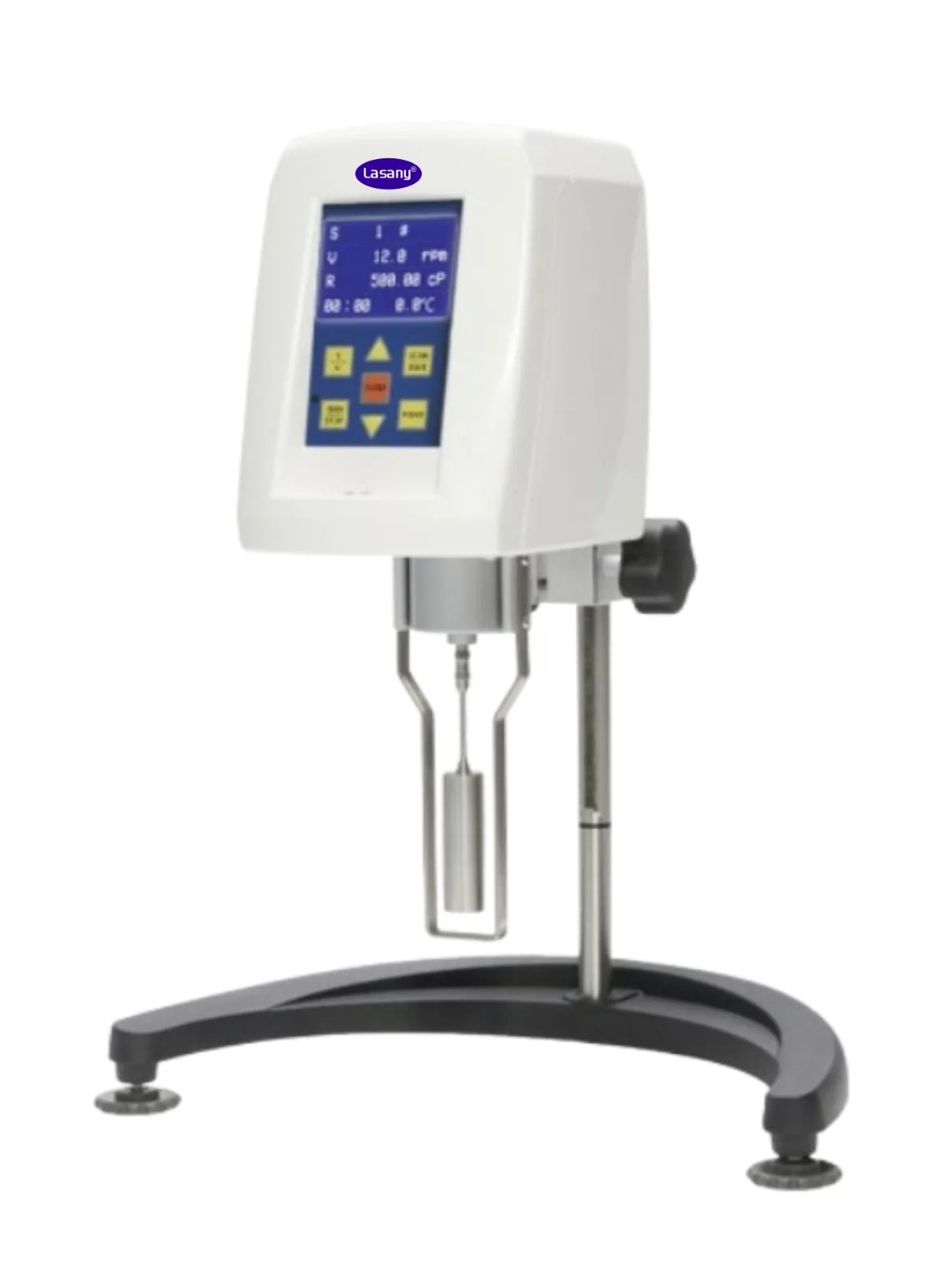
Product Description
A digital viscometer is a device used to measure the viscosity of a fluid, which is a measure of the fluid’s resistance to flow. Viscosity is important in various industries, such as pharmaceuticals, food and beverages, cosmetics, and lubricants. Digital viscometers provide accurate and reliable measurements, often displaying results on a digital readout for easy interpretation.
Key Components and Features
Measuring System:
- Spindle: A rotating element that is immersed in the fluid. Different spindles are used for different viscosity ranges.
- Motor: Drives the spindle at a controlled speed.
Control System:
- Digital Display: Shows the viscosity reading in units such as centipoise (cP) or Pascal-seconds (Pa·s).
- Keypad/Touchscreen: Allows the user to set parameters, such as spindle speed and measurement time.
Sensors:
- Torque Sensor: Measures the resistance to spindle rotation caused by the fluid’s viscosity.
- Temperature Sensor: Monitors the fluid temperature, as viscosity is temperature-dependent.
Software:
- Data Logging: Stores measurement data for future analysis.
- Graphical Display: Provides visual representation of viscosity changes over time.
Working Principle
A digital viscometer operates by rotating a spindle in the fluid at a constant speed and measuring the torque required to maintain that speed. The resistance encountered by the spindle is proportional to the fluid’s viscosity. The device converts this resistance into a viscosity reading displayed on the digital screen.
Types of Digital Viscometers
Rotational Viscometers:
- Measure viscosity by rotating a spindle in the fluid.
- Common in laboratory settings for a wide range of fluid viscosities.
Falling Piston Viscometers:
- Measure viscosity by observing the time it takes for a piston to fall through the fluid under gravity.
- Suitable for highly viscous fluids.
Vibrational Viscometers:
- Measure viscosity by vibrating a sensor immersed in the fluid.
- Often used for continuous monitoring in industrial processes.
Applications
- Quality Control: Ensures consistency and quality of products such as paints, oils, and foods.
- Research and Development: Investigates the properties of new materials and formulations.
- Process Monitoring: Monitors viscosity in real-time during manufacturing processes.
Advantages of Digital Viscometers
- Accuracy: Provides precise viscosity measurements with high repeatability.
- Ease of Use: Digital interfaces are user-friendly and allow for quick setup and operation.
- Data Management: Ability to store, retrieve, and analyze measurement data electronically.
- Versatility: Can measure a wide range of viscosities and is adaptable to various applications.
Technical specification
Measuring Range(mPa.s) : 10-2,000,000
No. of Speed(rpm) : 0.3, 0.6, 1.5, 3, 6, 12, 30, 60
Spindles : #1,#2,#3,#4 is Standard Configuration
All Measurement Parameters
Auto Range Function.
LCD Display with Back Light.
Direct Viscosity reading and Temperature Display.
Similar Products
-
Sale
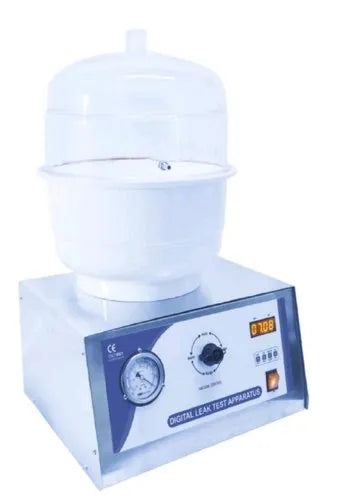
Vendor: Systonic
Systonic Leak Test Apparatus-S-939
Sale price Rs.52,000.00Regular price Rs.82,000.00 -
Sale
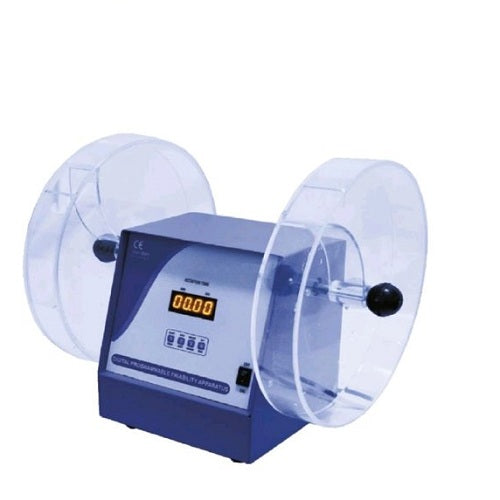
Vendor: Systonic
Digital Friability Test Apparatus
Sale price From Rs.16,000.00Regular price Rs.20,000.00 -
Sale
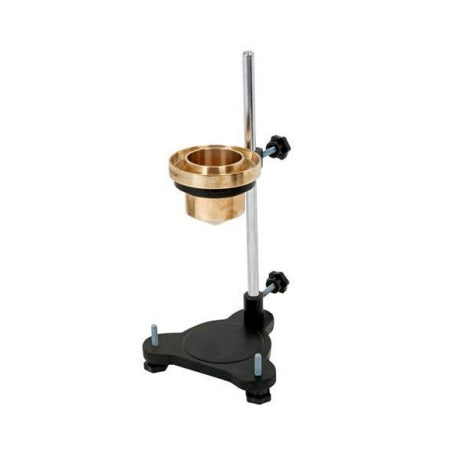
Vendor: Acutek
Flow Cup Viscometer I Ford Viscometer
Sale price From Rs.1,699.00Regular price Rs.4,000.00 -
Sale
Sold out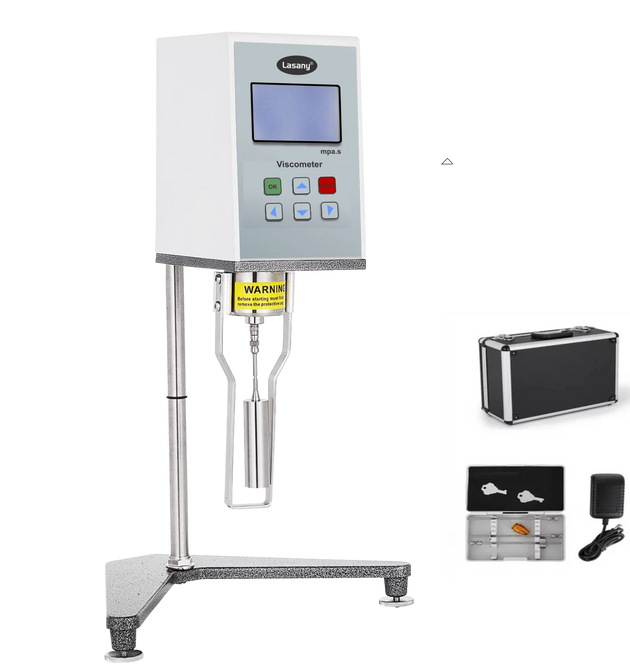
Vendor: Lasany
Digital Viscometer LI-V195
Sale price Rs.65,000.00Regular price Rs.84,000.00
Customers also bought
Complementary products
-
Free Shipping
Orders above Rs. 1000.
-
On Time Delivery
Within 7 days.
-
Money Back Guarantee
14 day Return*
-
Service Support
Online Installation Support.





